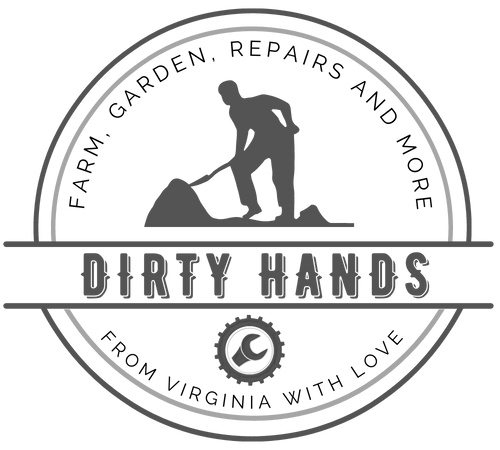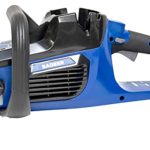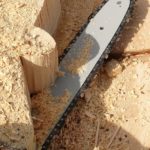Felling a tree can be a complex and potentially dangerous task that should be approached with caution.
It’s important to prioritize safety and take necessary precautions.
Here are some general steps to consider when felling a tree:
- Evaluate the tree: Assess the tree’s height, lean, and surrounding area. Ensure there is enough space for the tree to fall safely without hitting any obstacles such as buildings, power lines, or other trees. Take a look at the tree’s top and try to identify any dead limbs on it or nearby trees. These limbs can fall anytime and are known as “widow makers” because they can be deadly. Ideally you’ll be able to have the tree fall in the direction it’s leaning.
- Check your saw: Determine if your saw is capable enough for the tree. In general, you want to make sure your saw bar is at least as long as the diameter of the tree trunk. Ensure your saw chain is sharp. You can buy a new chain (see top-rated chains here) or sharpen your existing chain.
- Plan your escape route: Determine a clear path to retreat to once the tree starts to fall. This path should be at a 45-degree angle from the direction of the tree’s intended fall. Clear any sticks, brush, or small saplings – anything that you could trip on or would otherwise impede your escape.
- Use proper safety equipment: Wear appropriate safety gear, including a hard hat, safety glasses, ear protection, gloves, and sturdy footwear. Chainsaw operators should also wear chainsaw chaps or leg protection. We use the Husqvarna helmet with face shield and Forrester chaps.
- Clear the area: Remove any debris, rocks, or other tripping hazards from around the base of the tree.
- Make a notch: Make a horizontal cut into the tree trunk at a comfortable working height. Then make a downward-facing angled cut to create a notch. The notch should be about one-third of the tree’s diameter.
- Make the felling cut: Stand on the opposite side of the tree from the notch and make a horizontal cut (the felling cut) at a height slightly above the bottom of the notch. This cut should be on the same plane as the notch. Watch the cut opening and glance up at the tree’s top to determine if the tree is starting to fall. Pay particular attention to any widow makers or other falling hazards.
- Retreat to your escape route: As soon as the felling cut is complete (which is when it’s clear the tree is beginning to fall), immediately stop the chainsaw, put it down, and move quickly and safely to your predetermined escape route.
- Tree falling: The tree should start to fall in the direction of the notch. If it doesn’t, use wedges to guide its fall in the intended direction. Never turn your back on a falling tree, and keep a safe distance until it has come to a complete stop.
It’s important to note that tree felling can be a hazardous task, and it may be best to hire a professional arborist or tree service if you are unsure or uncomfortable with the process. They have the necessary expertise and equipment to safely fell trees.
Here is a video of a dangerous tree felling where the trunk was slightly rotten in the middle and it did not fall as expected.
Here are the key tools and equipment you’ll want to have to safely take down a tree:
note: links contained in this content may be Amazon Affiliate links. As part of Amazon Associates program, I’ll earn a commission on your qualifying purchases.
| Logging Helmet | https://amzn.to/36kdA7G |
| Husqvarna Chainsaw | https://amzn.to/2GjAZeO |
| Felling Wedges | https://amzn.to/38APw1G |
| Forester Chaps | https://amzn.to/2LdKulz |




